- Strategy Breakdowns
- Posts
- 🎯 Slack's acquisition spree
🎯 Slack's acquisition spree
6 purchases in 6 years to compete with Microsoft and Google
Read time: 3 minutes 48 seconds

Founder to Founder: The Guide to Building a Breakout Startup in the AI Age
Christina Cacioppo (CEO & Co-founder of Vanta) and Mario Gabriele (CEO & Founder of The Generalist) come together for a tactical deep-dive into what it truly takes to build a breakout startup.
In a market evolving at breakneck speed, they share sharp insights and real-world strategies for staying ahead of the curve.
Transform information into AI-powered impact
Atlassian has distilled how top leaders are connecting scattered data, reducing tool sprawl, and empowering employees to work more efficiently with AI into just six practical steps.
Find out how to go from data chaos to AI-driven clarity.
Thank you for supporting our sponsors, who keep this newsletter free.


The stories that inspire a startup founder to rethink their strategy differ from the tactics that help a strategy consultant nail a client project and get promoted.
The playbooks that a PM needs to embed product-led-growth loops differ from the skills a Head of Marketing needs to align their team around executing a viral campaign launch.
I've always deliberately crafted content and products for "people who want to understand how strategy actually works in modern companies".
But the reality is, there are 80,000 of you reading this, unified by a desire to master strategy, but with vastly different end games.
Part of my job is finding ways to provide as much value to you as possible, so if you’re someone who has specific ambitions you’re working towards, I’d love to know:
Which of these goals resonates most with you right now: |
It’s roadmap season at Strategy Breakdowns HQ. Your answer will help us create stuff that moves the needle for you!
— Tom
P.S. When you select your goal, there’s a space to add more context for those of you with specific thoughts / suggestions / things on your mind right now.
I’ll personally read every response.
Oh, and if you vote you’ll get to see the poll results too!
Now then - onto today’s breakdown.



Chess Move
The what: A TLDR explanation of the strategy
When Slack first launched, their target users were accustomed to the sophisticated suite of features offered by incumbents like Microsoft (Skype, later Teams, and Office 365) and Google (Meet, Drive, and GChat).
To compete, Slack had to develop a comprehensive offering with feature parity as quickly as possible.
Rather than building everything themselves, Slack executed a sequence of tuck-in acquisitions of complementary products, allowing them to rapidly close their feature gap with competitors.
Between 2014-2020 Slack completed 6 acquisitions:
2014: Spaces - Lightweight alternative to Google Docs.
2015: Screenhero - Multiplayer screen sharing service.
2018: Hipchat & Stride from Atlassian - Slack competitors.
2018: Missions - Automation tool for task management.
2018: Astro Technology - Unified email integrations.
2020: Rimeto - Employee directory software.
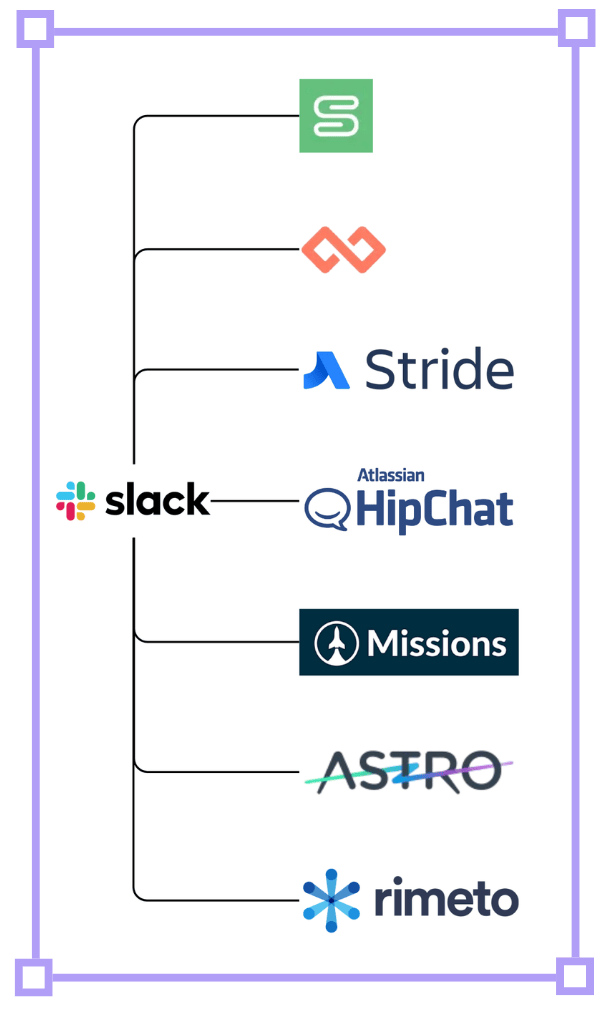
Slackquisitions.
By acquiring point-solutions with proven technologies and user bases, Slack was able to shortcut years of product development, minimise the risk of feature failures, and scale to 12 million DAUs by the end of 2020 (just 7 years after launching).

💡 | Strategy Playbook: Buy over build. |


Breakdown
The how: The strategic playbook boiled down to 3x key takeaways
1. Acquiring their way to "the operating system for work”
Slack’s biggest competitors, Microsoft and Google, had the tremendous advantage of large existing user bases from their other products.
This let them bundle in chat capabilities (Teams and G-chat) that integrate into the rest of the ecosystem.
Slack needed to create a user experience so compelling that people and companies would switch to their solution rather than use tools already accessible to them.
To compete in an already saturated market, Slack developed an acquisition strategy targeting technologies they believed to be the best in the world at their specific function.
Each of Slack’s acquisitions added best-in-class, net-new capabilities without the time investment of building them internally:
Document collaboration - (Spaces in 2014):
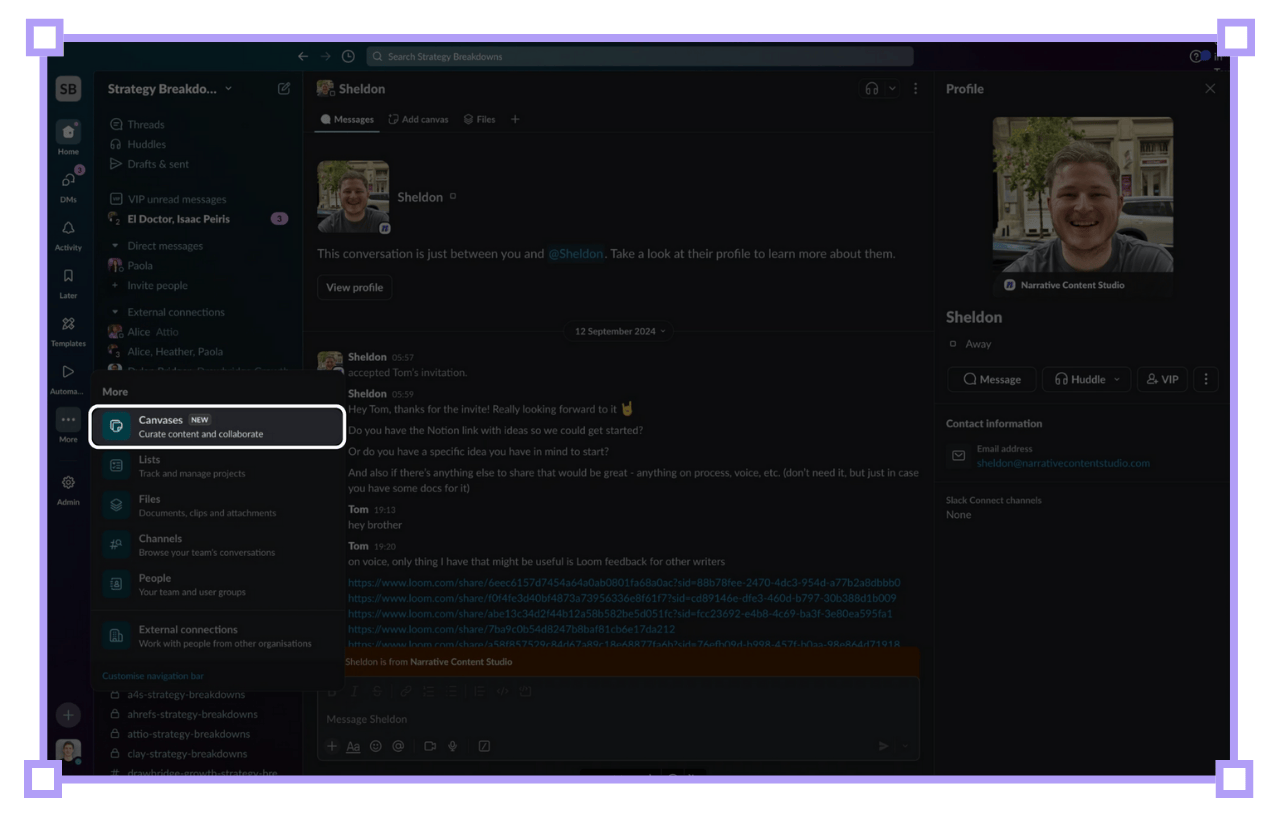
Your in-house alternative to Google Docs.
Collaborative screen sharing - (Screenhero in 2015):
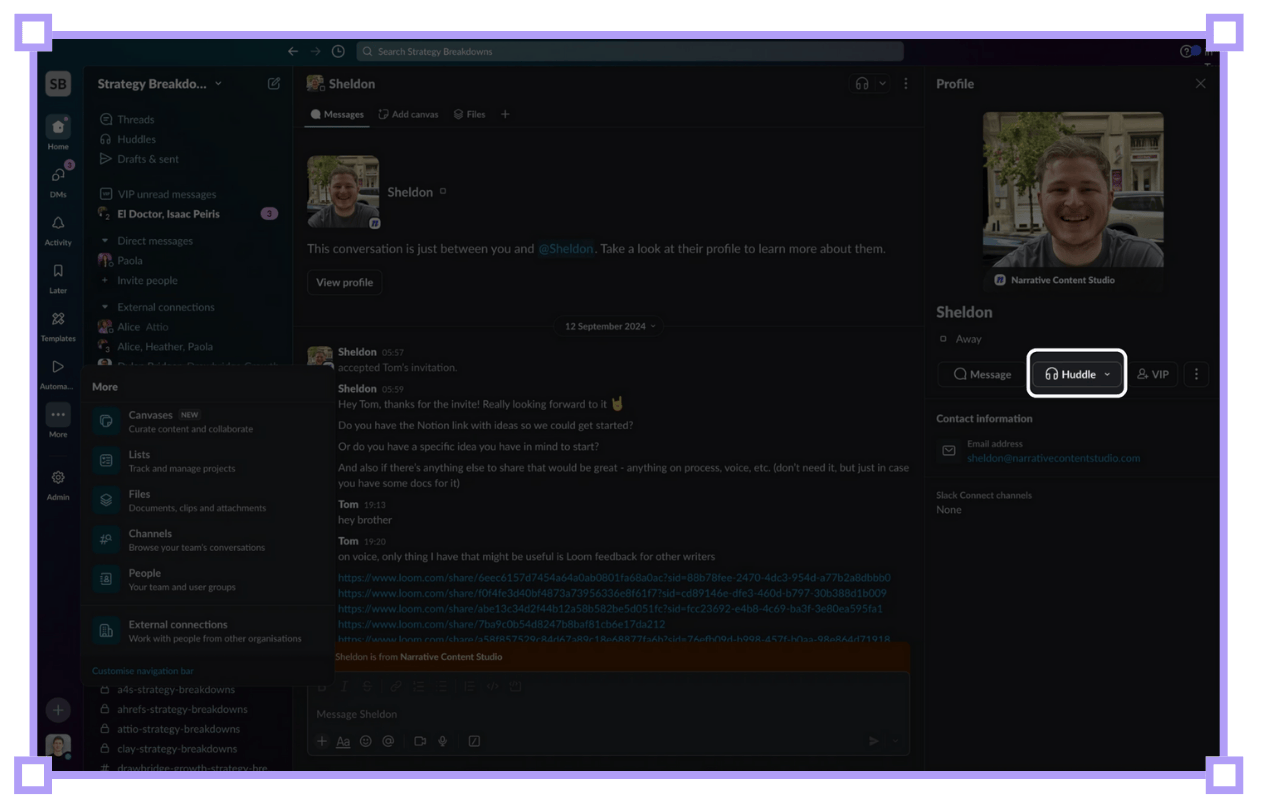
Go from live chats to video calls without leaving the app.
Workflow automations - (Missions in 2018):
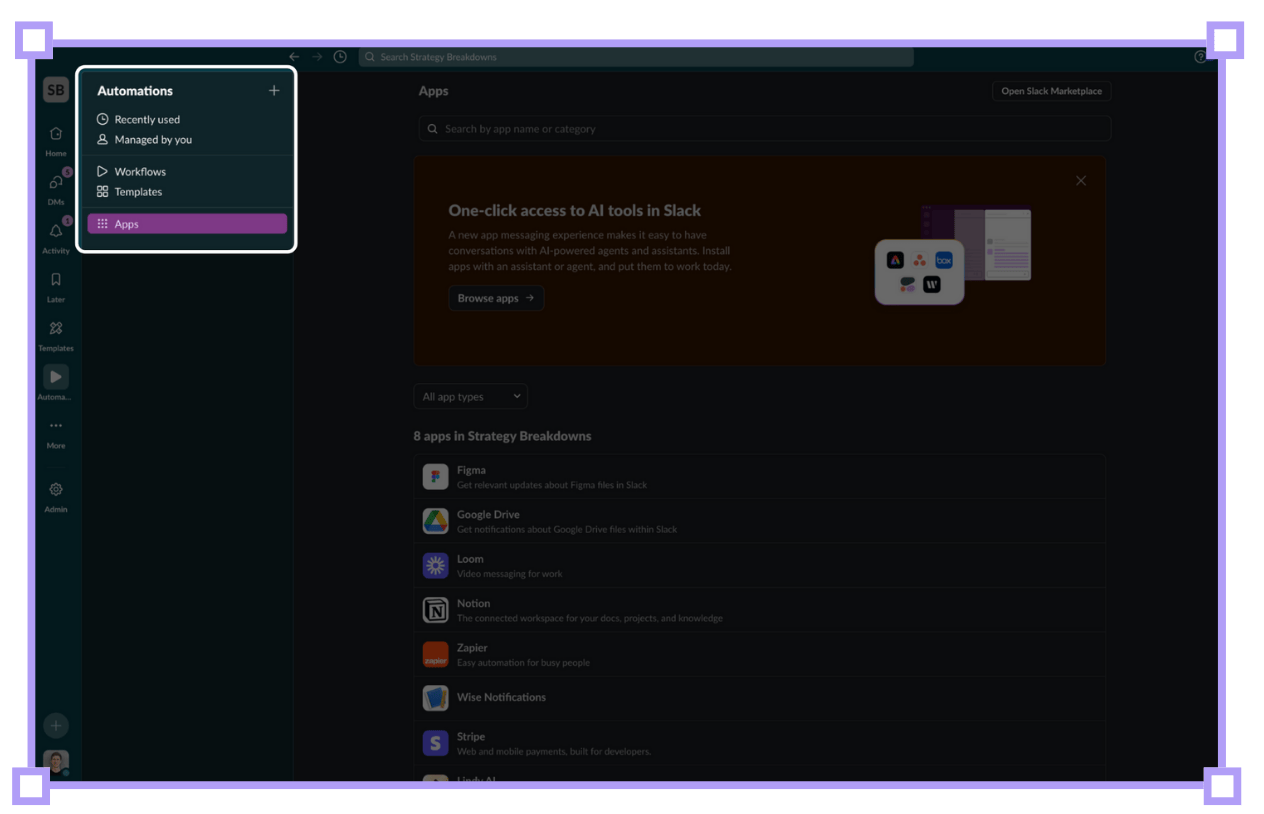
Make Slack the central hub for integrating and automating your apps.
Email & calendar integration - (Astro in 2018):
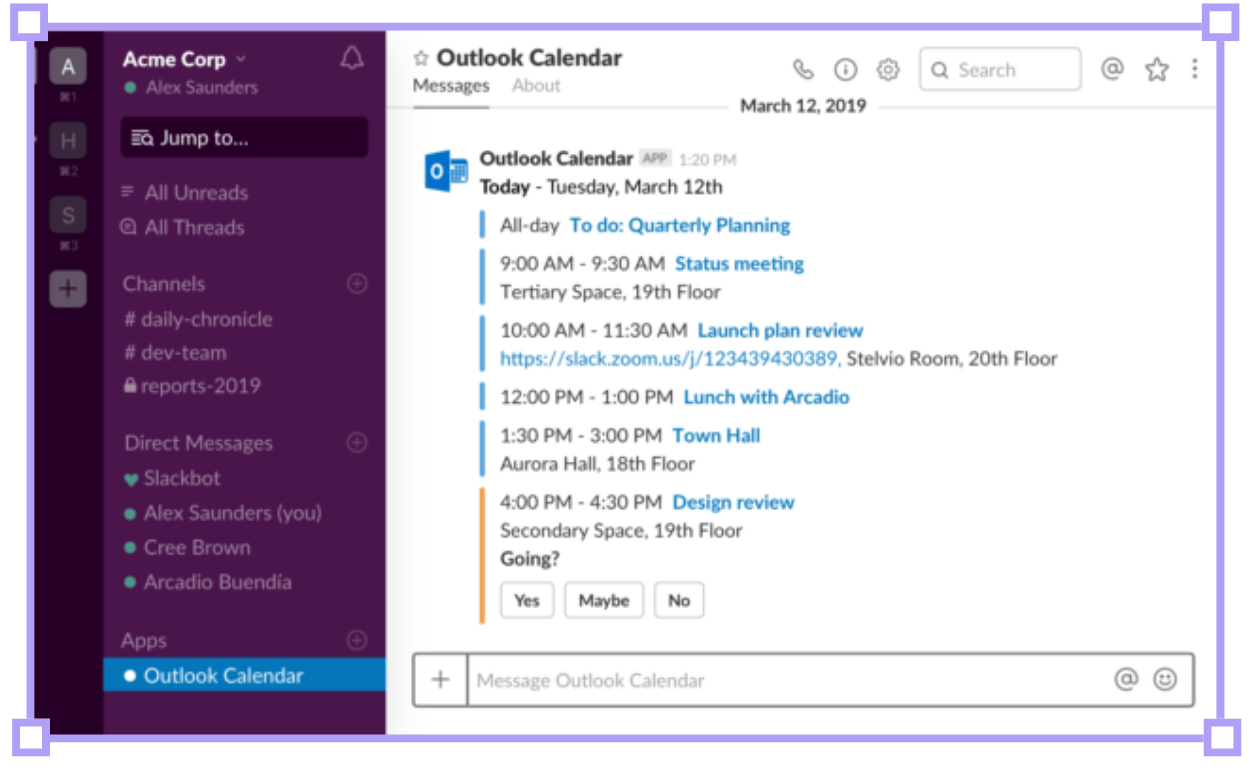
Slack aims to replace email in your org, but not everyone can remove email entirely. For those customers, Slack lets you interact with your Outlook / Gmail / GCal etc natively.
Employee directories - (Rimeto in 2020):
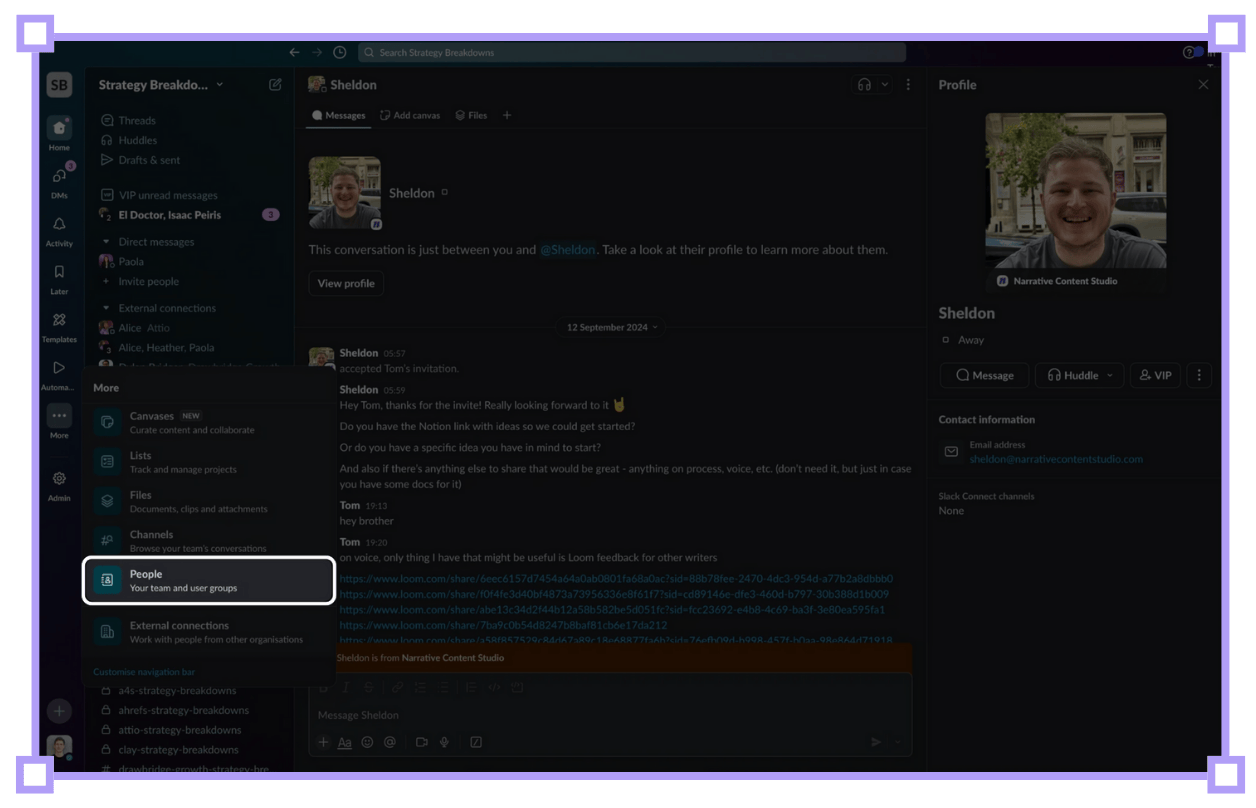
Get to know the names & faces at your company.
These acquisitions rapidly transformed Slack from a chat tool to “the operating system for work”.
2. Eating the Competition
The 2018 acquisition of HipChat and Stride from Atlassian was Slack paying for market control.
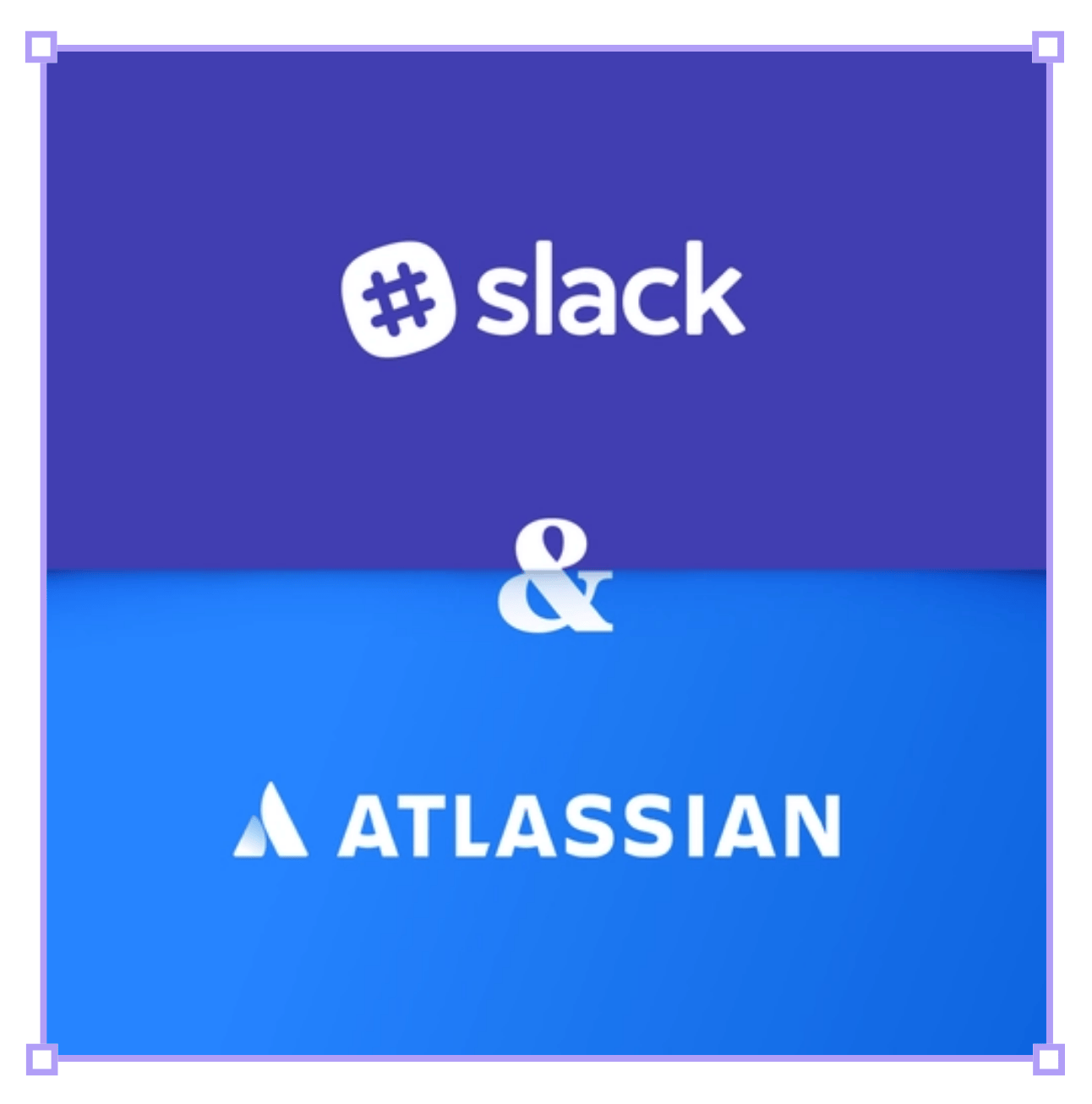
2 acquisitions + an equity partnership = turning point for the Chat market
This move wasn't just about technology, although Stride was a well built product.
It was about eliminating a competitor and migrating their users to Slack.
As part of the deal, Atlassian publicly pledged to exit the team-chat market altogether.
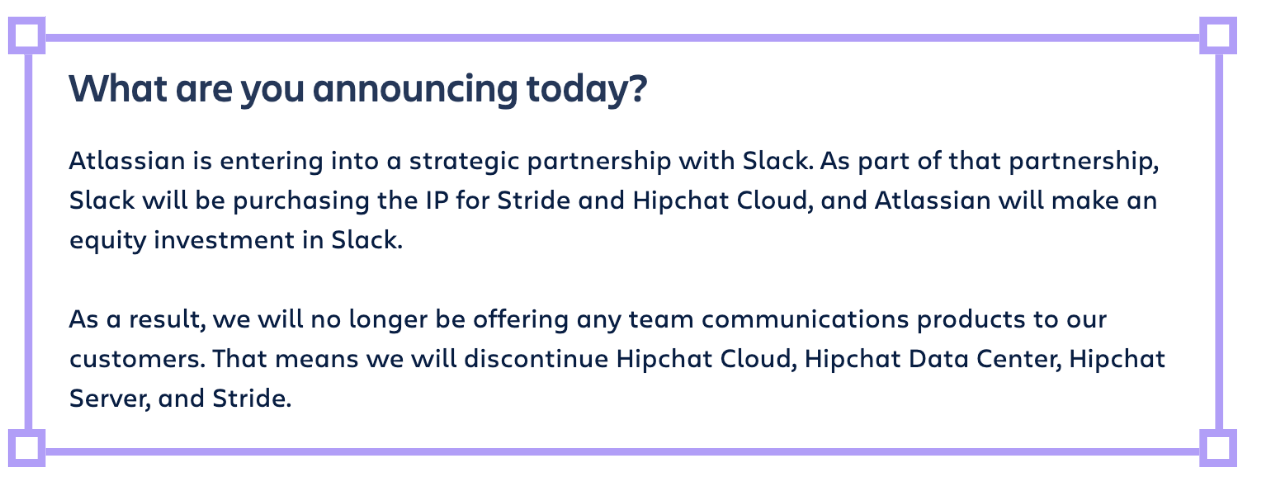
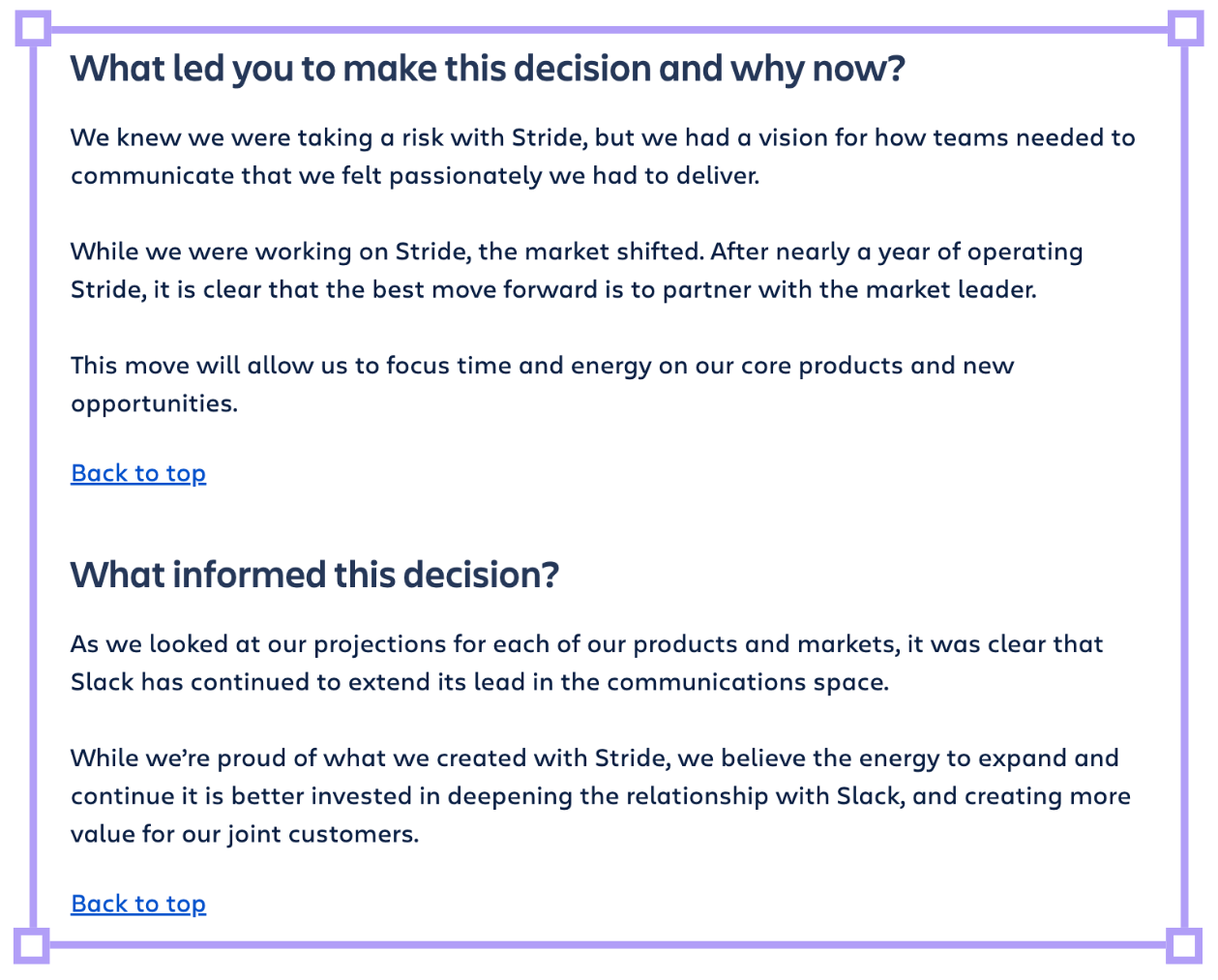
In exchange, Atlassian gained an equity stake in Slack and became the priority integration partner.
The 2 companies committed to “deep and powerful integrations that allow teams to collaborate”, across Jira, Confluence, Trello and more, and have since shipped > 11 joint integrations.
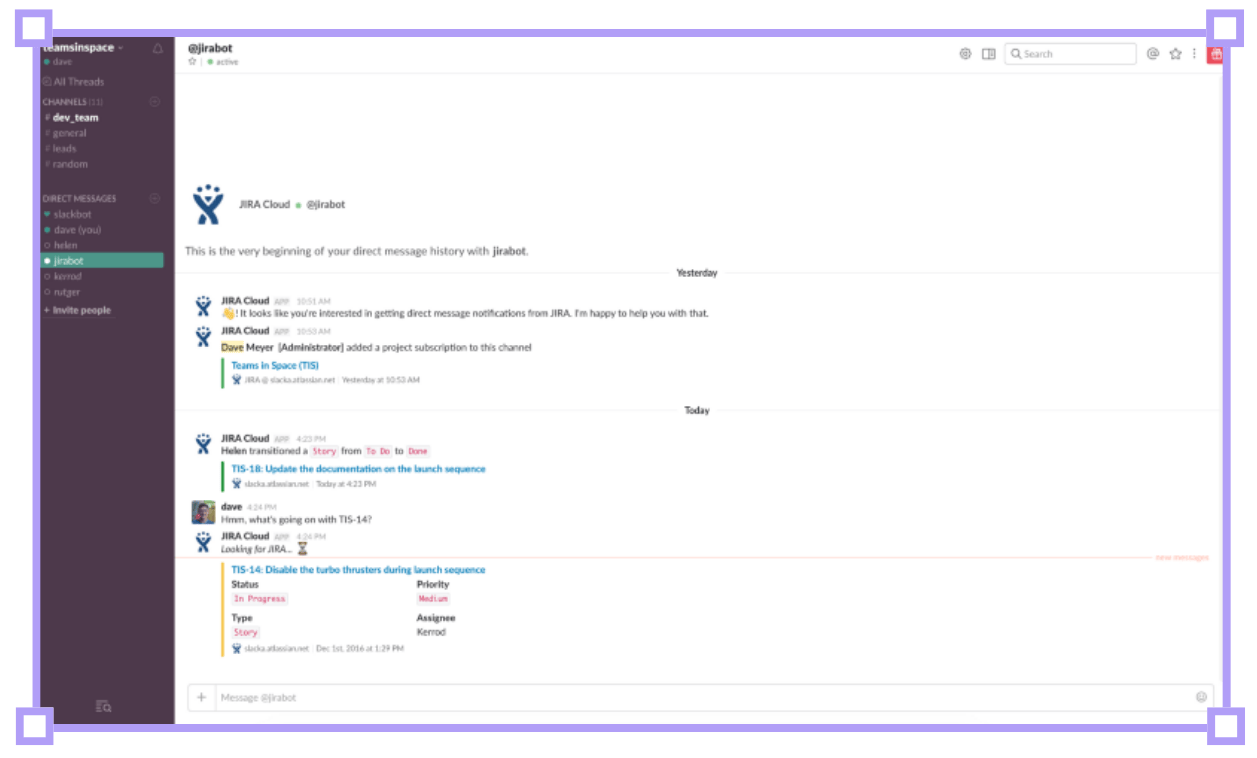
Your Atlassian stack is never more than a click away in Slack.
3. Betting on consolidation
The product strategy behind Slack’s acquisitions is to remove fragmentation through native solutions that reduce context-switching.
Rather than simply adding third-party integrations (which in some cases actually fragments user experience), Slack identified the most critical workflow junctures where users were forced to leave the platform → and then filled them.
The Astro acquisition exemplifies this approach: email remained the biggest context-switching tax on productivity, forcing users to constantly toggle between Slack and their inbox.
By acquiring and integrating Astro's technology, Slack users could handle email workflows without leaving the platform.
Through the Slack for Gmail integration:
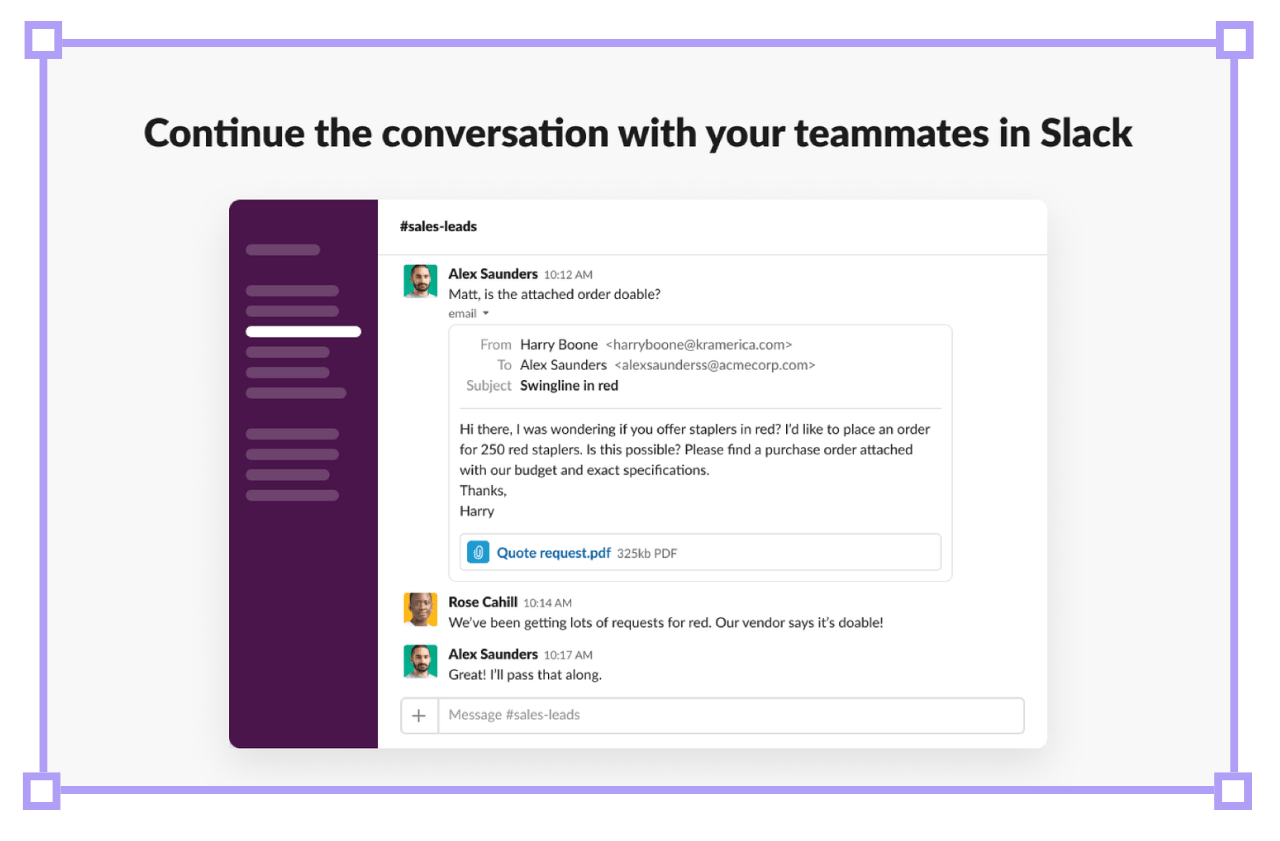
Petition for no more long email chains.
And through the Automations builder:
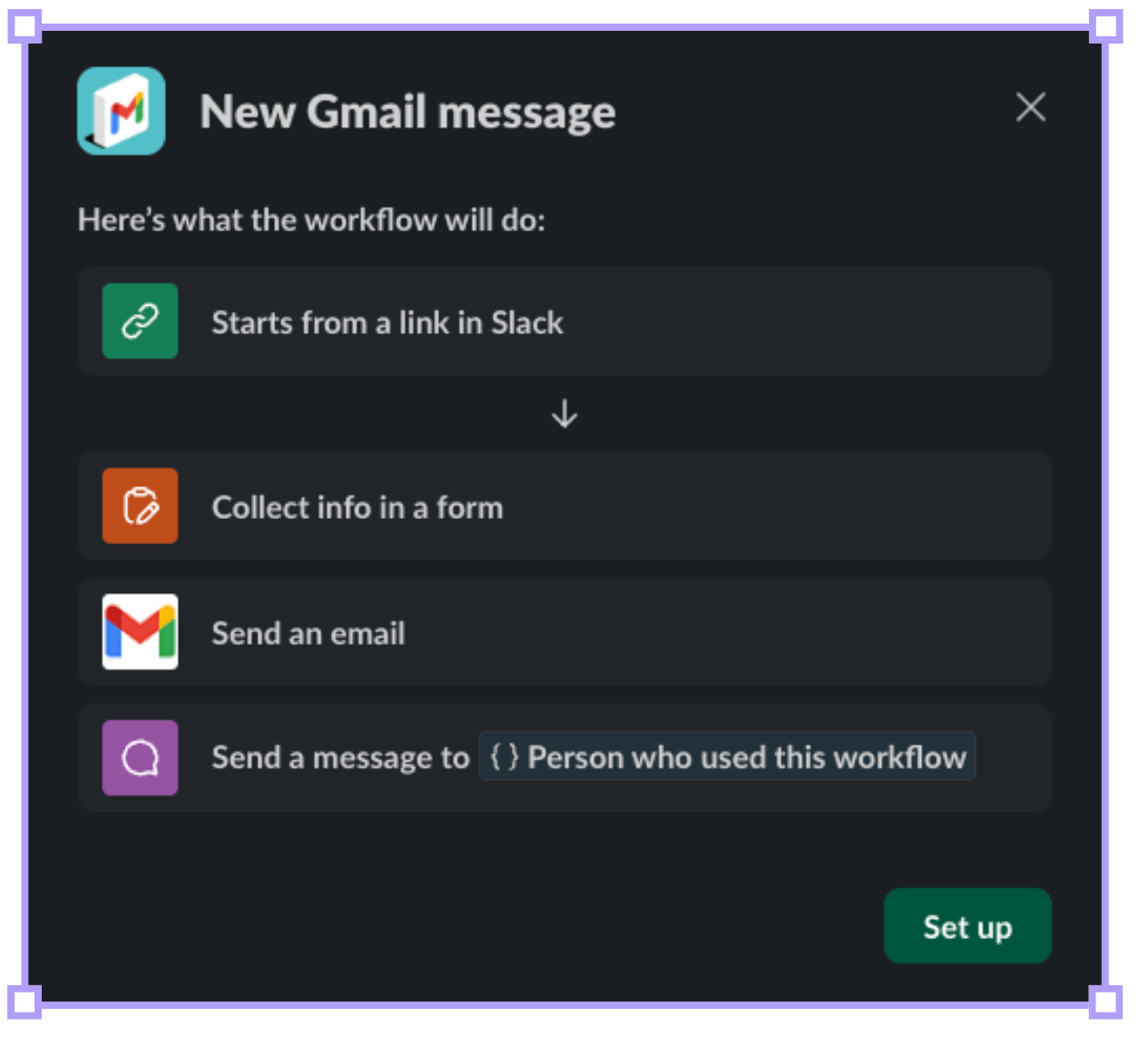
Slack provides built-in automation templates for popular workflows.
Huddle meant that users don’t need to switch out to Zoom/Teams/Meet.
Spaces featured real-time group editing and commenting, as well as file sharing and search capabilities → no need to switch to Drive or Sharepoint.
Rimeto addressed the growing need for remote workers to understand who their colleagues were and what they did → no need to exit Slack to figure it out.
This focus on consolidation allowed Slack to compete with Microsoft and Google’s bundled suites while maintaining its reputation for superior user experience and flexibility.
When Salesforce acquired Slack slack in December 2020, this was founder Marc Benioff’s strategy in a sentence:


Rabbit Hole
The where: 3x high-signal resources to learn more
[12 minute read]
This infamous leaked internal memo by co-founder Stewart Butterfield is a must-read for tech historians and product folk.
It concretely articulates the underlying philosophy that allowed Slack to build such a user-centric product.
Deep empathy for not just user needs, but also user emotions.
You learn something new each you re-read this one.
[32 minute read]
Teams conquered the world despite Slack being a superior product in every conceivable way.
Harvard professors theorise the uncomfortable truth about why companies choose Teams over Slack (spoiler: it’s not the features).
[8 minute watch]
This deep dive explains why Salesforce paid a 30% premium to acquire Slack six months ahead of schedule.
A high-conviction move - did it work?
Click here to see one perspective.
What did you think of today's edition? |
That’s all for today’s breakdown - hope you enjoyed!
— Tom Alder and Sheldon Bishop
P.S. We recently shipped a free video tutorial showing how to see any company’s web traffic, for free, in seconds.
Unbelievably useful for getting a quick sense of a company’s strategy and scale for use cases like sales, partnerships, product strategy, etc.


Whenever you're ready, there are 3 ways we can help you:
Our flagship course on how to use free internet data to make better strategic decisions. Contains 5 years of strategy expertise, proven methods, and actionable tactics to accelerate your career with modern-day strategy skills.
We have a growing audience of 70,000+ strategists from top companies like Google, Meta, Atlassian, Stripe, and Netflix. Apply to feature your business in front of Strategy Breakdowns readers.
One of the most common questions we get asked is: “What tools do you use to run Strategy Breakdowns?” So, we’ve open-sourced our tech stack to give you an inside-look at exactly what tools we’re using to power each corner of this operation.



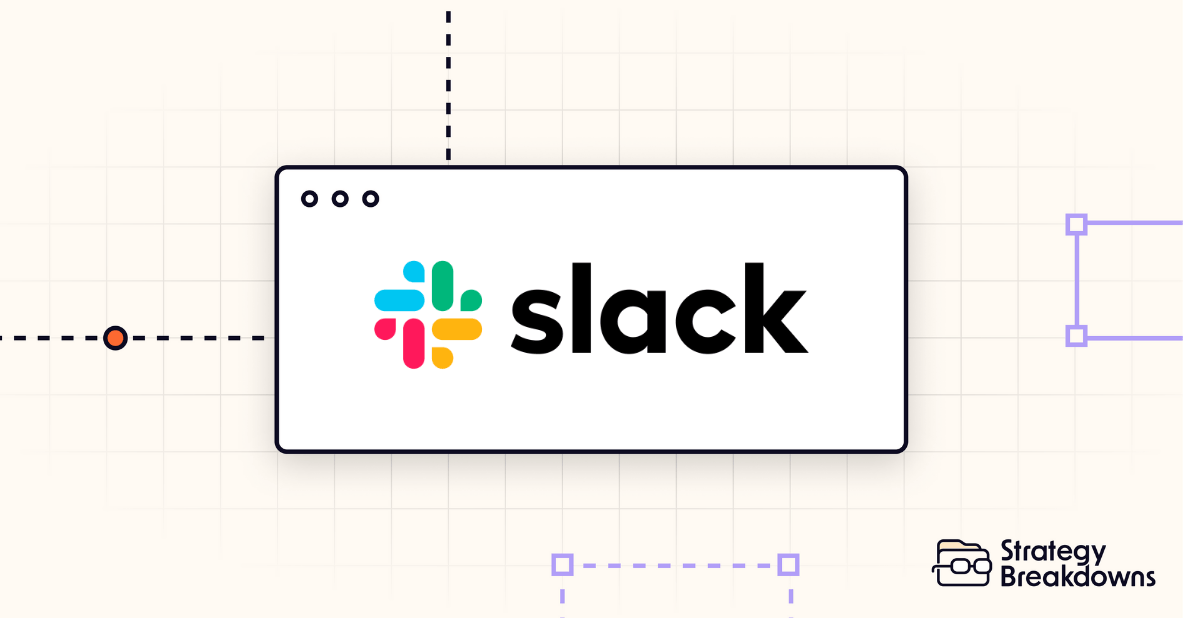
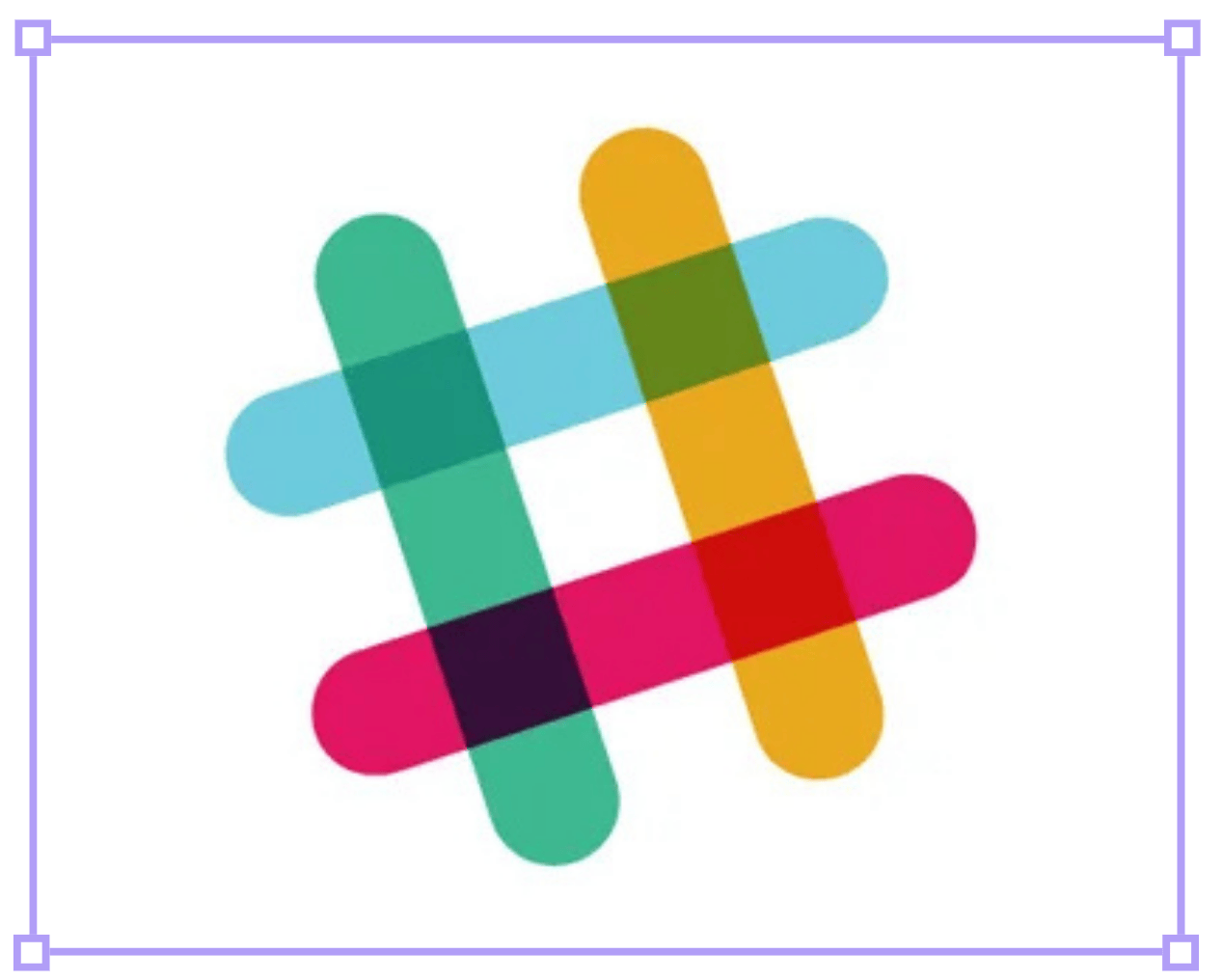
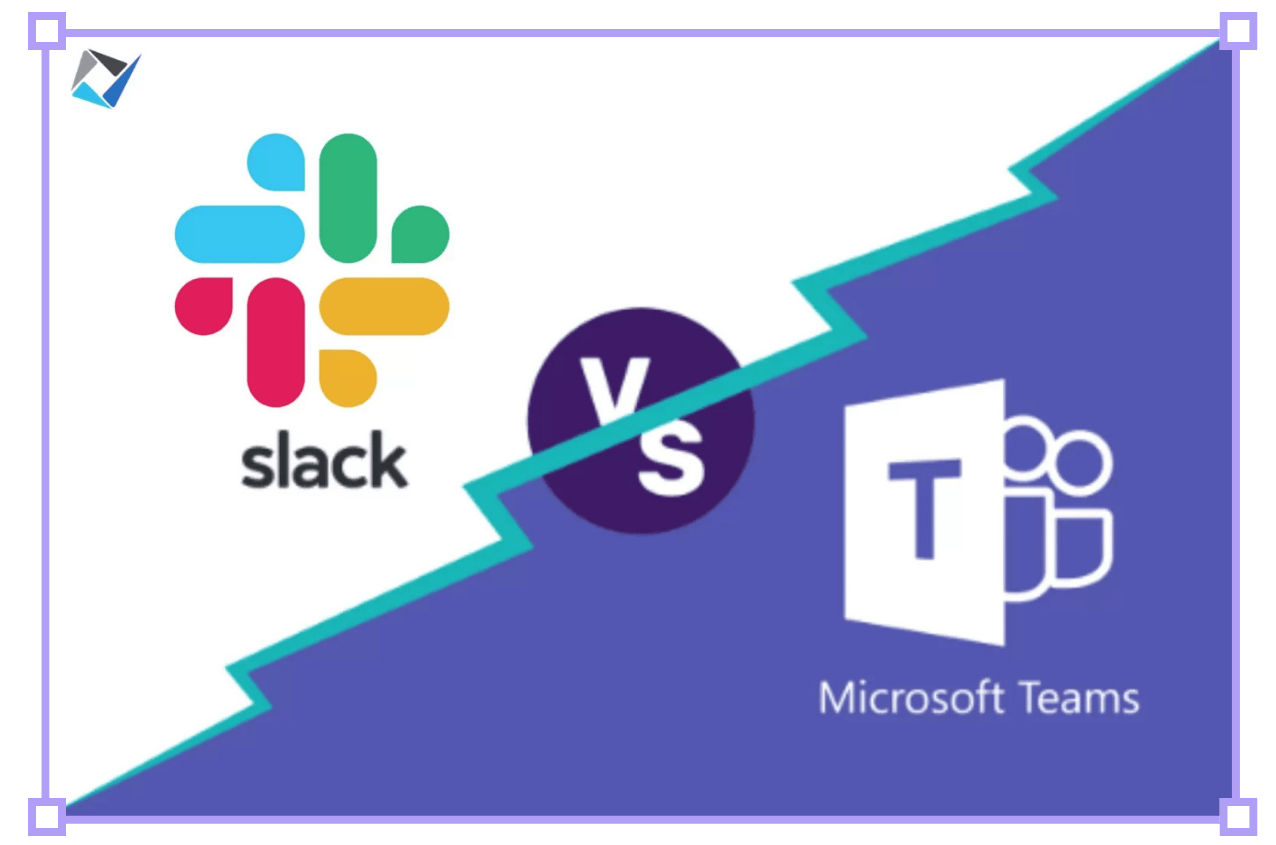
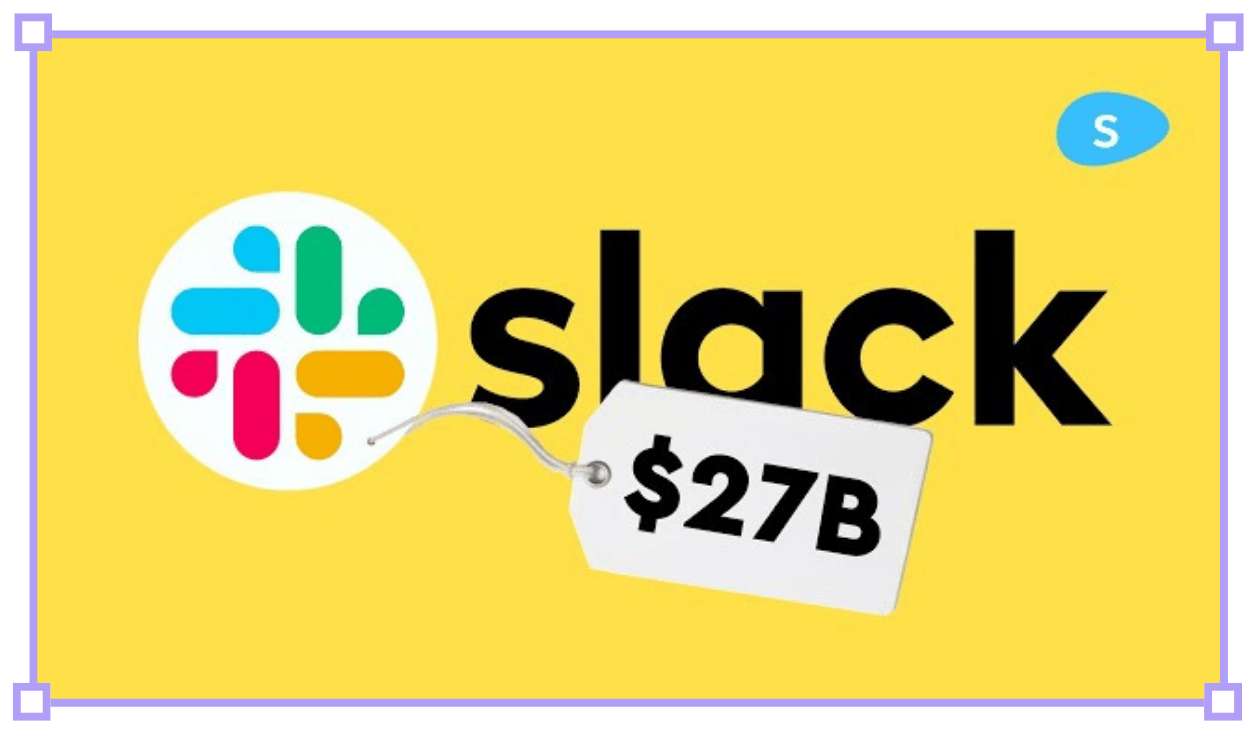
Reply